With a boxier 3:2 aspect ratio, you can fit more on the MateBook 16's 16in screen than most alternatives - and that's perfect for remote work.
Should I Buy The Huawei MateBook 16 (2021)?
Pros
- Detailed, vibrant display
- Spacious 3:2 aspect ratio
- Powerful AMD chipset
- Stylish design
Cons
- Awkwaqrd 720p webcam
- No discrete GPU
- Spongey keyboard
- No touchscreen support
Our Verdict
- The AMD-powered MateBook 16 and its large boxy 3:2 display is perfect for split-screen multitasking, dealing with emails, spreadsheets, coding and video calls (as long as you can get past the terrible angle from the built-in webcam) but the lack of a discrete GPU means it's not quite as an attractive proposition for creatives.
Price When Reviewed
- From €1099 (US Pricing TBC)
Huawei is finally launching the biggest laptop in the MateBook range outside of China, with the AMD-flavoured MateBook 16 now available to buy in parts of Europe, and a UK release expected (but still unconfirmed) in the near future.
Sporting a massive 16in FullView display, the latest AMD processor and a unique aspect ratio tailored to productivity, the MateBook 16 could be a hit for remote workers, but creatives might be a little disappointed – especially given the high-end asking price.
Is the Huawei MateBook 16 worth the premium price tag? Keep reading to find out.
Design & Build
- Stylish design similar to others in the MateBook range
- Fairly portable for a 16in laptop, but it's heavy at 2kg
- Premium sandblasted aluminium chassis
Huawei hasn’t rewritten the rulebook when it comes to the design of the MateBook 16, looking just like every other recent MateBook – just bigger. That’s not necessarily a problem though; just like the rest of the range, the MateBook 16 looks sleek, premium and let’s be honest, faintly like a MacBook Pro.
Considering the large 16in display on offer, the chassis isn’t as big and unwieldy as it could’ve been, measuring in at 254.9 x 315 x 17.8mm, although it is a little on the weighty side at just shy of 2kg. It is still a big laptop though, make no mistake, and you’ll probably struggle as much as I did to find a rucksack or laptop bag big enough to carry it with me.
That’s largely down to Huawei’s choice of material, sporting a fully aluminium chassis with the classic Huawei sandblasted finish to help reduce the marks, fingerprints and smudges that aluminium tends to pick up over time. It’s available exclusively in a Space Gray finish, which has a slightly purple shimmer to it in some lights, but that’s still not quite as eye-catching as some high-end laptops.
Screen
- Gorgeous high-res 16in display
- Boxy 3:2 aspect ratio is perfect for multitasking
- Bright, with great sRGB coverage
- Not great for watching movies
The main draw of the MateBook 16, as its name implies, is the big, beautiful 16in display. It’s an IPS panel, so those looking for a sweet OLED experience should look elsewhere, but the high resolution (2520 x 1680) and interesting aspect ratio will be more than enough to tempt some.
The resolution might seem a little odd, and that’s down to the 3:2 aspect ratio employed by the MateBook 16 (and others in the MateBook collection) rather than the widescreen 16:9 or 16:10 on most other laptops.
Productivity is where the MateBook 16 excels most, as watching typical Hollywood blockbusters will always have huge black bars atop and below when watched in full-screen mode.
When it comes to performance, expect a bright, vivid, detailed display that looks stunning when it first comes alive upon opening the lid of the laptop. The gorgeously slim bezels provide a near edge-to-edge experience (a 90% screen to body ratio, to be precise) with only the chunky bottom bezel letting the side down. It’s also bright too, hitting 377nits in tests, which is more than Huawei’s claimed 300nits max brightness.
It’s also got great colour reproduction, as found in tests using Colordata’s Spyder X, offering 98% sRGB coverage, resulting a great visual experience whether you’re browsing the net or watching a YouTube video. It’s not quite the perfect monitor for creatives though, managing only 73% of the AdobeRGB gamut.
The only real downside to the display is the lack of touchscreen compatibility; it’s a feature of the smaller MateBook 14, and given the ability to interact with smartphone apps (more on that later) it feels like it would’ve been a handy feature on the big-screen model. At least it should stay fingerprint-free, right?
Keyboard & Trackpad
- Large full-size backlit keyboard can feel a bit spongey at times
- Hidden 720p webcam is back, and the angle is still terrible
- Huge trackpad is perfect for tapping, swiping and gestures
Huawei’s laptop keyboards aren’t going to win any awards. Most prefer the typing experience of the Dell XPS 13, while I personally like the MacBook Pro’s Magic Keyboard, but that’s not to say it’s a bad typing experience.
It also features Huawei’s signature 720p webcam built into the keyboard, hidden beneath a fake function key when not in use. Then, with a press, the webcam pops out, ready for use. In the days before the pandemic, it was heralded as a great way to slim down bezels without entirely removing the webcam, and it had obvious privacy bonuses too.
Sure, it had a fairly unattractive angle pointing up your nose, and your fingers would occasionally get in the way as you’re typing, but video calls were a bit of a rarity in everyday life, and it’s something most users would put up with.
Fast forward to today and the reliance on video calling, and thus webcams, has never been greater. Even with countries beginning to return to some semblance of normalcy, the shift to remote working means that video calls are set to be a staple of working life going forward.
If you’re going to be using a webcam every day or even just fairly regularly, it’ll need to be better than what’s offered with the MateBook 16. Even if you could adjust to the terrible angle it offers, and the fact your fingers get in the way, the overall quality isn’t great.
If you do need a webcam for work and you’ve got your heart set on the MateBook 16, I’d recommend looking at our selection of the best webcams for an all-round improvement.
The saving grace is the huge glass trackpad that sits beneath the full-size keyboard, providing ample space for swiping and gestures, plus the tap recognition is great if you don’t like fully clicking the trackpad to make a selection. With a trackpad this large and responsive, I didn’t feel the need to reach for my mouse at all.
The trackpad also houses the Huawei Share functionality – but more on that later.
Audio
- Up-firing stereo speakers
- More clarity than most laptops with down-firing speakers
- Built-in mics are convenient for video calling
One of the perks of the MateBook 16’s large chassis is the front-facing stereo speakers, which sit on either side of the full-size keyboard behind a speaker grille.
The speakers won’t compete with full-size Bluetooth speakers in terms of overall performance, but for casual listening, they hold up pretty well.
It’s also a decent video conferencing setup when combined with the two-mic array, with no real complaints from other participants about mic quality or clarity in my recent video chats.
Ports & Connectivity
- More ports than the MateBook 14, but no SD card reader
- Fingerprint Power Button works reliably most of the time
- Support for Wi-Fi 6 and Bluetooth 5.1
Considering the large dimensions of the MateBook 16, I was expecting to find more ports on the sides of the chassis. As it stands, you’ll get two USB-C ports (though lacking Thunderbolt), an HDMI port and a 3.5mm headphone jack on the left of the laptop, while the right houses two USB-A 3.2 ports.
When it comes to other forms of connectivity, the MateBook 16 fares a little better, sporting the latest Wi-Fi 6, along with Bluetooth 5.1.
There’s also a fingerprint scanner built into the power button that has the ability to scan your fingerprint as you turn the laptop on. In my experience, this means I only have to press the button a single time to power on and get access to my password-locked account and the near-instant read time means that even if I do need to reverify, it takes less than a second.
- Latest AMD Ryzen chipsets provide solid CPU performance
- No discrete GPU means average graphical power, not ideal for gamers
- New dual shark fin cooling system keeps things running smoothly
So, what’s lurking beneath the hood of the big-screen Huawei laptop? It’s an AMD-exclusive affair this time around, much like the UK launch of the AMD-only MateBook D14 back in late 2020 (though that was available with Intel chips in other territories, while this isn’t).
You’ve got the choice between two models, with the key difference being chipset; the entry-level model sports the AMD Ryzen 5 5600H while the top-end model features a more powerful AMR Ryzen 7 5800H.
Both are coupled with a generous 16GB of DDR4 RAM and 512GB of solid-state storage. It’s a nice, simple offering compared to other manufacturers, something that consumers will no doubt appreciate.
The one big disappointment is the lack of a dedicated GPU. Even the smaller Intel variant of MateBook 14 came equipped with the Nvidia GeForce MX350 GPU, and given the extra space inside the chassis of the large 16in model, it would’ve been great to see something similar here – especially on the top-end model. Instead, it utilises AMD’s Integrated Graphics.
When things did begin to get hot, the MateBook 16’s new dual shark-fin fan system kicked in. It was at its loudest when running benchmark tests, as expected, but it was otherwise near-silent in use, and keeping the system cool means you’ll get peak performance for longer periods – as well as being more comfortable if you're actually using your laptop on your lap.
Of course, you’ll get a laggy experience trying to run the latest AAA games on AMD’s integrated graphics, but outside of gaming the MateBook 16 is a great performer, and that’s largely backed up by the benchmark results.
It’s clear that the lack of a discrete GPU is the chink in the MateBook 16’s armour; it comfortably beat most competition in the CPU-focused Geekbench 5 and PCMark 10, but it fell behind when it came to the graphical tests in 3DMark.
It’ll handle basic gaming on low graphic settings, but if you’re an avid gamer, or a video editor wanting to edit multi-cam 4K video shoots, there are certainly 16in laptops with more graphical grunt available.
Battery Life & Charging
- All-day battery life with average use, but not the longest battery life ever
- USB-C charging means 135W charger can be used to power other USB-C devices
- Average charge times, providing 33% in 30 minutes
Thanks to a combination of a large 84Wh battery and AMD’s power-efficient chipset design, I’ve found that the MateBook 16 can comfortably get me through an average day of work using word-processing software, instant message software and a healthy dose of browsing, without needing to reach for a charger – even with a high-res 16in display to power.
Of course, that’ll depend on your specific workload, as running video editing software or chatting in video calls will make the laptop drain at a faster rate. The MateBook 16 scored a decent 13 hours and 20 minutes in our battery benchmark, but it’s far behind the 20hrs and 38 minutes from the LG Gram 17, so there are certainly more power-efficient laptops on the market.
Windows 10 & Huawei Ecosystem
- Runs Windows 10 out of the box with an upgrade to Windows 11 available
- Special features for Huawei device users
- Can access Huawei smartphone screen from the laptop, or use Huawei tablets as a wireless second screen
Unlike with Huawei’s smartphones, its laptops – and its business with Microsoft – remains unaffected by the ongoing US trade ban, meaning the Huawei MateBook 16 comes with Windows 10 out of the box with access to the same software as any other Windows laptop. In fact, there are a few things that the MateBook can do that most can’t.
Much like how Apple’s devices work with one another, Huawei has its own device ecosystem, with Huawei’s laptops playing very nicely with Huawei smartphones and tablets. It goes much further than simply wirelessly sharing files too (though it does that), with the ability to access your smartphone’s display from the MateBook 16 simply by tapping it on the trackpad.
Your smartphone will then appear in a window on your laptop, with access to your text messages, calls, apps and files, with the latter offering two-way drag-and-drop for easier file management. The MateBook 16 experience is a little less intuitive than the MateBook 14, due to the lack of a touchscreen, but it’s still a handy feature for Huawei smartphone owners.
I can’t draw to save my life, but the ability to add a second screen is handy. After all, the more screens the better, right?
Of course, this is only a benefit if you have a recent Huawei smartphone or tablet nearby, and given the lack of Google Play Services, chances are you don’t. But still, it’s a nice touch for dedicated Huawei fans, and it worked flawlessly in testing.
It’s also worth noting that while the MateBook 16 ships with Windows 10, it’s ready for the upgrade to Windows 11 whenever you’re ready.
Price & Availability
The large display and high-end chipset mean the Huawei MateBook 16 comes in at a premium, starting at €1,099 for the Ryzen 5 variant, while the Ryzen 7 variant will set you back €1,199.
You can buy the laptop in various European markets right now, but UK and US availability are yet to be confirmed. The latter is a little iffy, but given the fact that most previous iterations of MateBook have launched in the UK, I'm confident it’ll reach UK shores sooner rather than later, but I’ll update this section once I know more.
If you’re in Europe, you can buy the Huawei MateBook 16 from Huawei, and we’ve got our selection of the best laptops for those that need a little more inspiration before making a purchase.
Verdict
There’s a lot to love about the MateBook 16; it boasts a sleek design with a stunning 16in IPS display with some of the slimmest bezels on the market, and it’s bright too. However, it’s the 3:2 aspect ratio that steals the show, offering much more screen real estate than 16:9 alternatives, a real boon for workers, multi-taskers and those that spend their time analysing data.
The only downside is that it’s not suited to watching movies, with the boxy aspect ratio leaving large black bars atop and below the content you’re watching.
The laptop is AMD-powered, sporting either the latest Ryzen 5 or Ryzen 7 alongside a generous 16GB of RAM and 512GB of SSD storage, with more than enough power to handle split-screen multitasking, word processing and even image editing.
However, the lack of a dedicated GPU means it isn't the strongest contender when it comes to advanced graphic design, video editing or hardcore gaming. If you do need something with a little more graphical oomph, there are better options in our gaming laptop chart.
So, if you’re looking for a stylish laptop for emails, word processing, social media and just about everything else that doesn’t rely on graphics performance - and don't mind the keyboard webcam - the MateBook 16 is a solid option.
Specs
- 254.9 x 351 x 17.8mm
- 1.99kg
- 16in IPS display (3:2 aspect ratio, 2520 x 1680)
- Full-size keyboard with backlighting
- Hidden 720p webcam
- Large glass trackpad
- Front-firing stereo speakers
- Fingerprint Power Button
- AMD Ryzen 5 5600H or Ryzen 7 5800H
- 16GB DDR4 RAM
- 512GB SSD
- 2x USB 3.1
- 2x USB-C
- 1x HDMI port
- 1x 3.5mm jack
- 84Wh battery with 135W USB-C charger
- Wi-Fi 6
- Bluetooth 5.1
- Huawei Share
- Windows 10, with upgrade to Windows 11 available

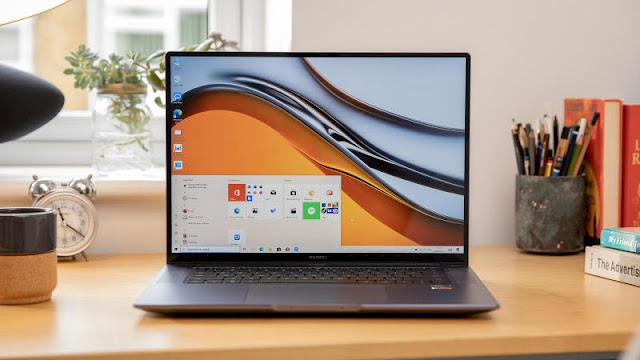







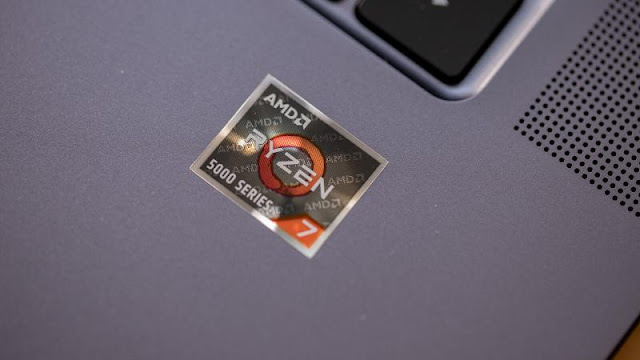


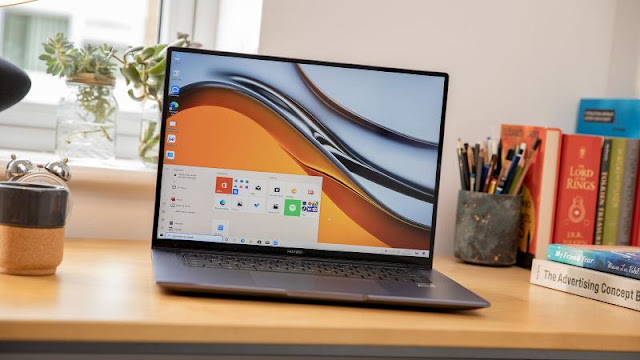

%20Review.webp)
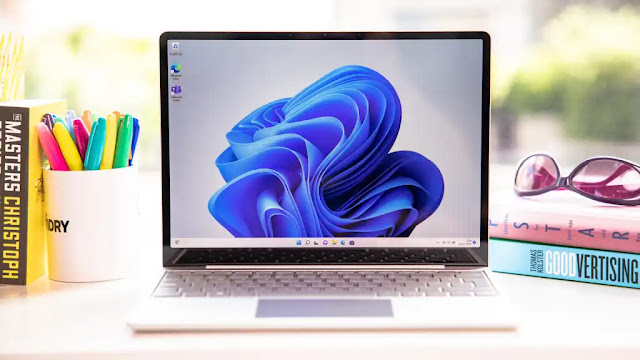
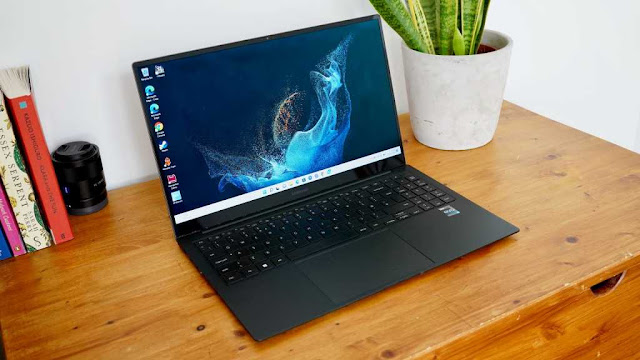



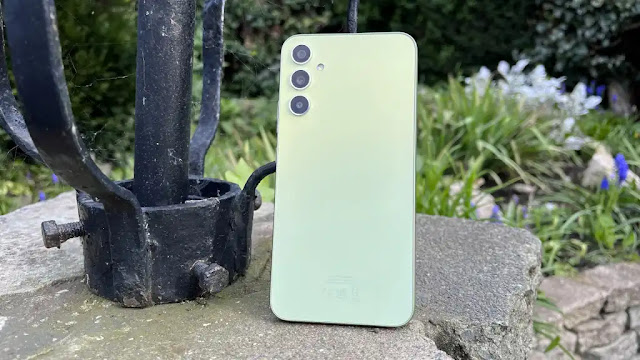






0 comments:
Post a Comment